How an Italian restaurateur took on the Mafia.
REGGIO CALABRIA, Italy—
The scene is low-quality and grainy black and white, and in his black jeans and black jacket, with a black baseball cap pulled low over his face, it’s almost impossible to make out the features of the bulky man who walks into the empty restaurant and, hands stuffed in his jacket, calls to the kitchen.
The chef, Filippo Cogliandro, seems to know the visitor—or at least to recognize his type— and emerges in his whites and striped apron, offers the man a coffee at the bar, and leads him by the arm to a corner table. This is L’Accademia, Cogliandro’s restaurant, and it is the best in Calabria, and one of the best in southern Italy—which is to say, world class. The chef of such an establishment would normally expect to be not just in charge, but to be a king, a lord, a mad-kitchen-scientist pasha.
But on this day, in his own dining room, Chef Cogliandro is not in charge. When the two men sit, the visitor takes the seat at the head of the table, sitting easily, his elbows resting on the table. Cogliandro sits to one side in the supplicant’s seat and when he speaks, he leans forward, lowers his head and extends his empty palms before him.
“The thing is, Pepe,” begins Cogliandro, “even after a month of work, I still need it. I have so many problems. And I’ve been thinking…”
The visitor interrupts. “Make sure that you are a person who pays on time above all else,” he says. “Whenever you can, of course. Every year. Every seven months or eight months. But if someone comes here for pizzo, spare a thought for the cousins locked away.”
Cogliandro tries again. “It’s difficult for me to do this,” he says. “I’ve got all these problems, and I’ve only managed to get together €200.”
“How much?” the visitor asks.
“Two hundred,” replies Cogliandro.
“Make it €300,” the man in the baseball cap snaps back. “Make it €300, and we’ll send it to them.”
Cogliandro passes the money over and the two men talk for a while longer. Then the visitor stands, thanks Cogliandro, and kisses him on both cheeks.
As the man walks out, Cogliandro watches him go. He stays like that, feet wide apart, hands folded, watching. And with every second that passes, Cogliandro seems to grow. The fear and subservience lifts. His stance becomes defiant and confident, even satisfied. And why not? It was a good performance. Cogliandro showed the necessary respect. He didn’t give in too quickly or agree to too much. He showed the cash as he had been told. He was, in fact, in control all the way through.
And not once did he look up at the camera.
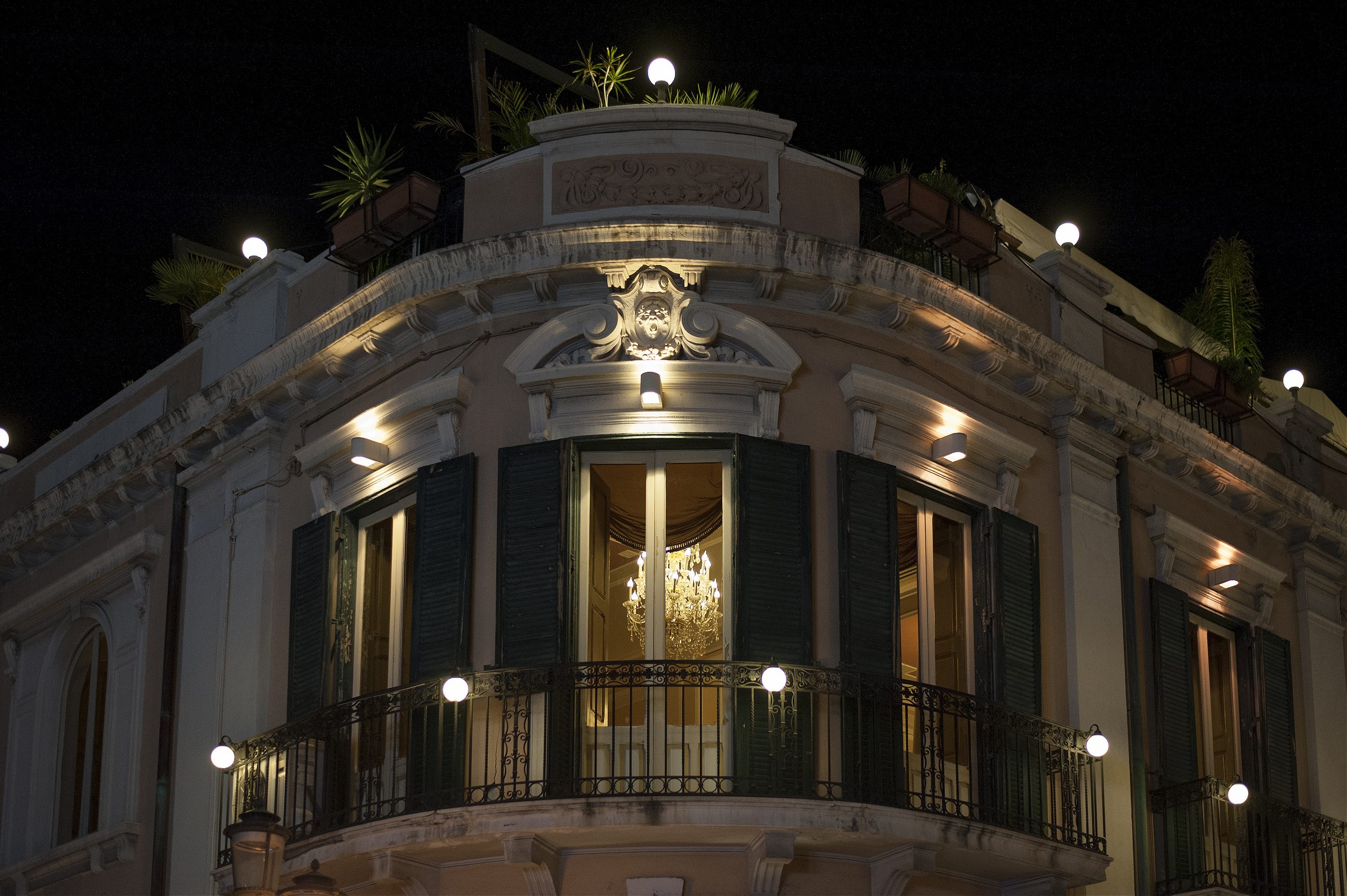
These days, chefs like to talk about integrity. Creativity is as celebrated as ever, of course, but it is balanced by equal attention to what happens to the ingredients before they arrive in the kitchen: their provenance, terroir, season, their place in nature, their varietal. It’s what Japanese chefs call kaiseki—recognizing context and making the best use of it.
Such thinking runs deep in Italy. Until around 15 years ago, Italian chefs were strait-jacketed by the Italian kitchen. There was one way to make tortellini or lasagne, one way to use parmigiano reggiano and mozzarella, and only one lemon zabaglione—and that was the way mamma made it. At the restaurant that today is hailed as the best in Italy, Osteria Francescana, in Modena, Massimo Bottura was deconstructing and reinventing Italian dishes for six years in the 1990s—and enduring six years of empty tables and reviews accusing him of culinary treason—before his talent was recognized and he won three Michelin stars. In the end, what convinced Italians of Bottura’s intentions was the way he gave his ingredients even more respect than mamma, making an artichoke soup that seemed to distill the globe’s essence or a dish called the Five Ages of Parmigiano whose execution required a deep and intimate knowledge of the maturation process of Emilio Romagna’s signature cheese.
If anything, Chef Filippo Cogliandro set himself an even harder task by trying to reinvent the food of southern Italy. The south abounds in cherished culinary idiosyncrasies. There are the bright green Nocellara olives from Mount Etna, the plump oranges, lemons, and pomodoro from the silt plains north of Reggio Calabria and the big horned mountain sheep that roam the hills either side of the Straits of Messina dividing Calabria from Sicily, whose milk makes the best ricotta. Calabria, a region of mountains and coasts that form Italy’s toe, is especially inward looking. When it comes to food, Calabrese hold their traditions of handling and cooking far dearer than innovation, or even practicality. Even in the 21st century, fishermen still hunt swordfish in the deep, fast currents of the Straits using passarelle—boats rigged with 30-meter masts from which the pilot spots the fish and maneuvers the bows so that his harpoonist, on another 45-meter span extending out over the water, can take a shot.
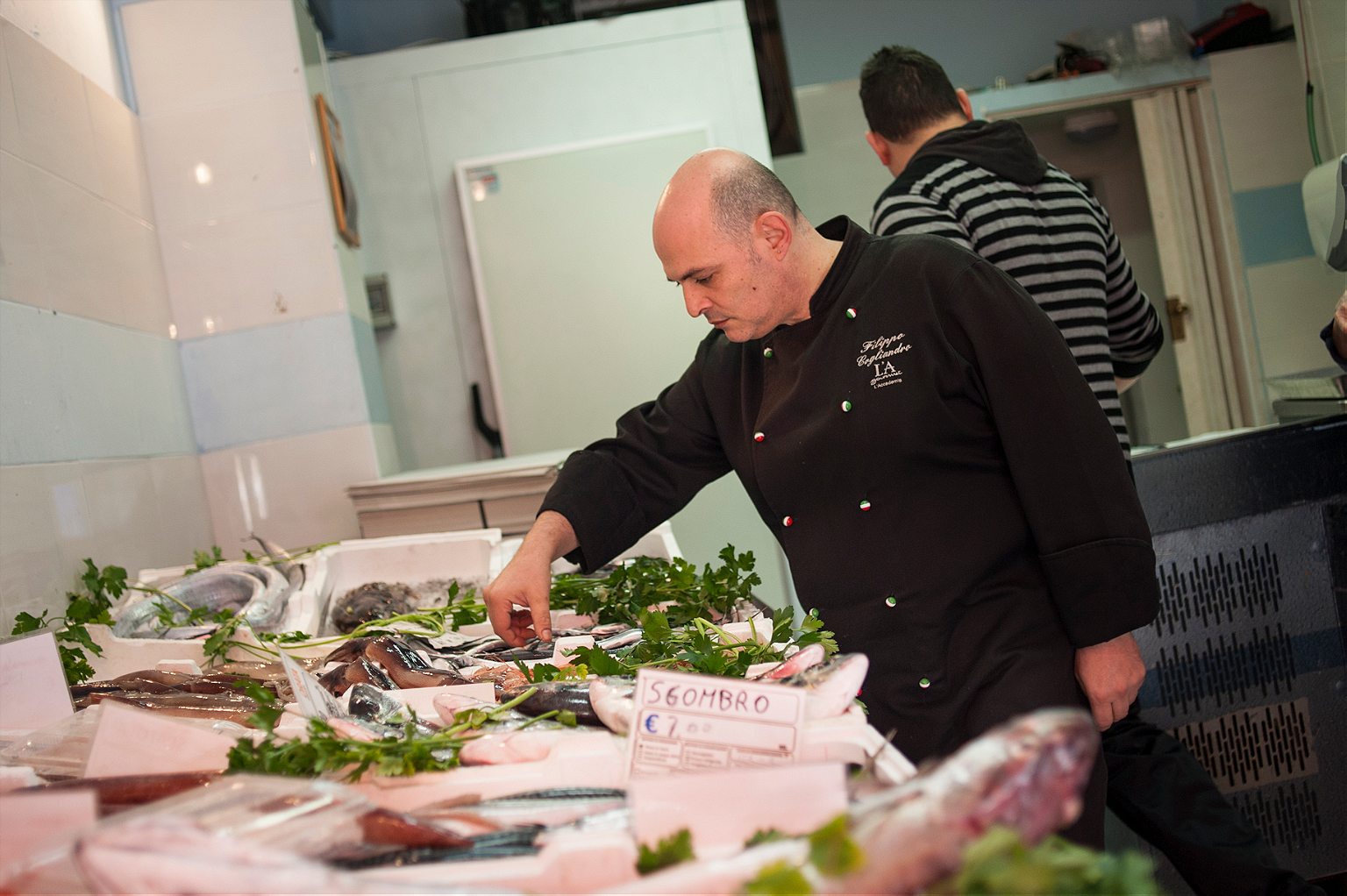
Like a lot of young chefs, Cogliandro wanted to reinvigorate tradition. “The philosophy that accompanies every decision in my kitchen is that of play,” he says. But he understood permission for experimentation would only be granted if he showed respect for his Calabrese heritage. One way to do that, of course, and to augment his kitchen’s integrity, was to totally reject one particular Calabrese restaurant tradition: The paying of pizzo. For as long as anyone can remember, the Calabrian mafia, the ‘Ndrangheta, has come knocking on the doors of shops, stores, gas stations, and restaurants asking for donations to support those “cousins” unlucky enough to find themselves in jail. Pizzo is a tax which serves a dual purpose: as a lucrative revenue stream and a reminder of who, between the Italian state and the ‘Ndrangheta, really holds power.
On a July night this year, a friend and I stroll along the seafront of Reggio Calabria and up the gracious staircase to L’Accademia to experience for ourselves what it means for a chef to take back that power and freedom. When we take a seat in front of the kitchen, Cogliandro sees us, claps his hands in delight and, over the next three hours, sends out a series of intricate and stunningly inventive dishes. Monkfish risotto with zucchini, creamed squash, and truffle. Pinned sea bass with pistachio. Delicate rolls of tuna with Aspromonte ham, tomatoes, and red onion chutney. Cuttlefish marinated in bergamot.
After service, Cogliandro joins us and describes how, when one afternoon in December 2008 three men and a woman from the ‘Ndrangheta walked into L’Accademia, ate lunch, then demanded pizzo, it was his honor as a chef that was most offended. “They say, ‘When we come to eat, you give us a little present for our cousins,” Cogliandro recalls, sipping grappa on the roof terrace of L’Accademia. “Three hundred euros. Five hundred. However much you can give.” Instinctively, Cogliandro refused. “For me, it was a matter of conscience,” he says. “In the kitchen, I have to cook with a clean conscience. I have to respect my ingredients and my staff. We all have to respect ourselves and our homeland. That is the integrity of my kitchen.”

Cogliandro is 45 years old, a large, bald man with pudgy hands and a fastidious manner. He is not a man to deny himself pleasure. He is also not, by nature, confrontational. But if family and tradition runs deep in the south, Cogliandro’s own family tradition is resistance to the Mafia. In the 1970s and 1980s, Cogliandro’s father, Demetrio, owned a service station and roadside café in Lazzarro in southern Calabria, the same town where his son first opened an earlier incarnation of L’Accademia. One day in 1986, as Demetrio was driving home from work, a motorbike carrying two men pulled up. The passenger pulled out a gun and shot at the car, riddling it with bullets and hitting Demetrio in the legs. His father, Cogliandro learned later, had refused to pay pizzo and the ‘Ndrangheta were making an example of him. Though Demetrio survived, he was badly wounded and spent several years recovering. For the rest of his life Demetrio refused to expand the business or even clean the windows—“Nothing, basically, that could attract attention,” says Cogliandro. “He was a strong character but this was emblematic of the fear the ‘Ndrangheta spread.”
To Cogliandro and the people of Lazzarro, Demetrio had set an example. Now that the ‘Ndrangheta had approached the son as well, Cogliandro felt that giving would be to ruin everything. This was not just about his restaurant. Since his kitchen was an expression of his beliefs and his homeland and how he defined himself and his family in the world, it was also everything he cared for. On top of that, if Cogliandro folded and betrayed his father’s example, all the other local businesses in the area that had taken heart from the Cogliandro family’s defiance would follow suit.
“I thought a lot about my future and the future of my family in this land,” says Cogliandro, looking out at the black waters of the Messina Straits and the lights of Sicily beyond. “And I asked myself: ‘Do I want to stay here? Do I want my family to stay here?’ I try to represent my land in my cooking. Well, what kind of land do I want it to be? What if, growing up, my daughter were to ask: ‘Daddy, what have you done for us? Did you do anything to improve our situation? Or did you condemn us? I wouldn’t be able to forgive myself.”
No, Cogliandro decided. He had to stay clean. He had to refuse to pay anything. “You start giving money to these people, you give to them all your life,” he says. “Most people denounce the Mafia because they can’t take the extortion any more, because they’re drowning. But I had to denounce it even before I had paid a dime. That was the only way to stay true.”
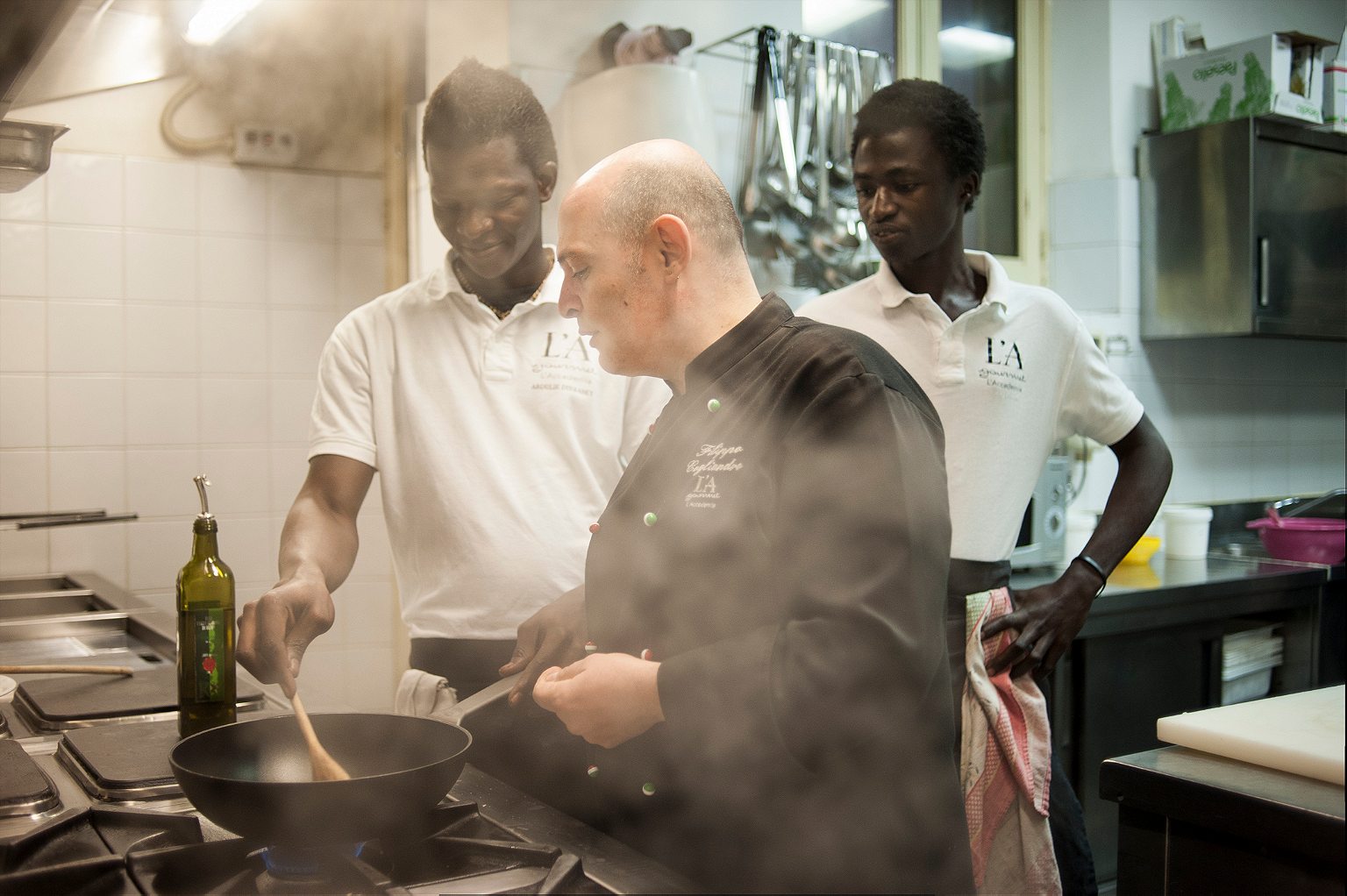
‘Ndrangheta is an ancient Greco-Mediterranean word (pronounced un-drung-get-a) meaning “courage,” “loyalty,” or “manliness.” The ‘Ndrangheta is one of three large southern Italian mafias: the ‘Ndrangheta in Calabria; the Camorra in Naples; and Cosa Nostra in Sicily. They share a founding myth, claiming to be descended from three Spanish medieval knights, brothers who fled to Italy after killing a Spanish nobleman who had dishonored their sister. One brother settled in Sicily, one in Naples, and one in Calabria, and each founded their own society of honor and loyalty.
Of the three, it was the Sicilian Cosa Nostra that became the most famous, depicted in films such as Francis Ford Coppola’s Godfather series and making headlines around the world in the 1980s and 1990s, when it fought a bloody all-out war with the Italian state in which hundreds died in assassinations, shootouts, and car bombs. For its part, the Camorra struggled to achieve the same sophistication of the other two and to this day still runs street gangs in Naples alongside more white-collar enterprises centered on corruption.
Of the three, it is the ‘Ndrangheta that is the most secretive and closed of the three Mafias— and, not coincidentally, the wealthiest and most powerful organized crime outfit in Europe. Almost all ‘Ndrangheta leaders come from the same small group of a few hundred Calabrese families, each of whom runs their own cell, or ‘Ndrina, into which you are either born or marry into.
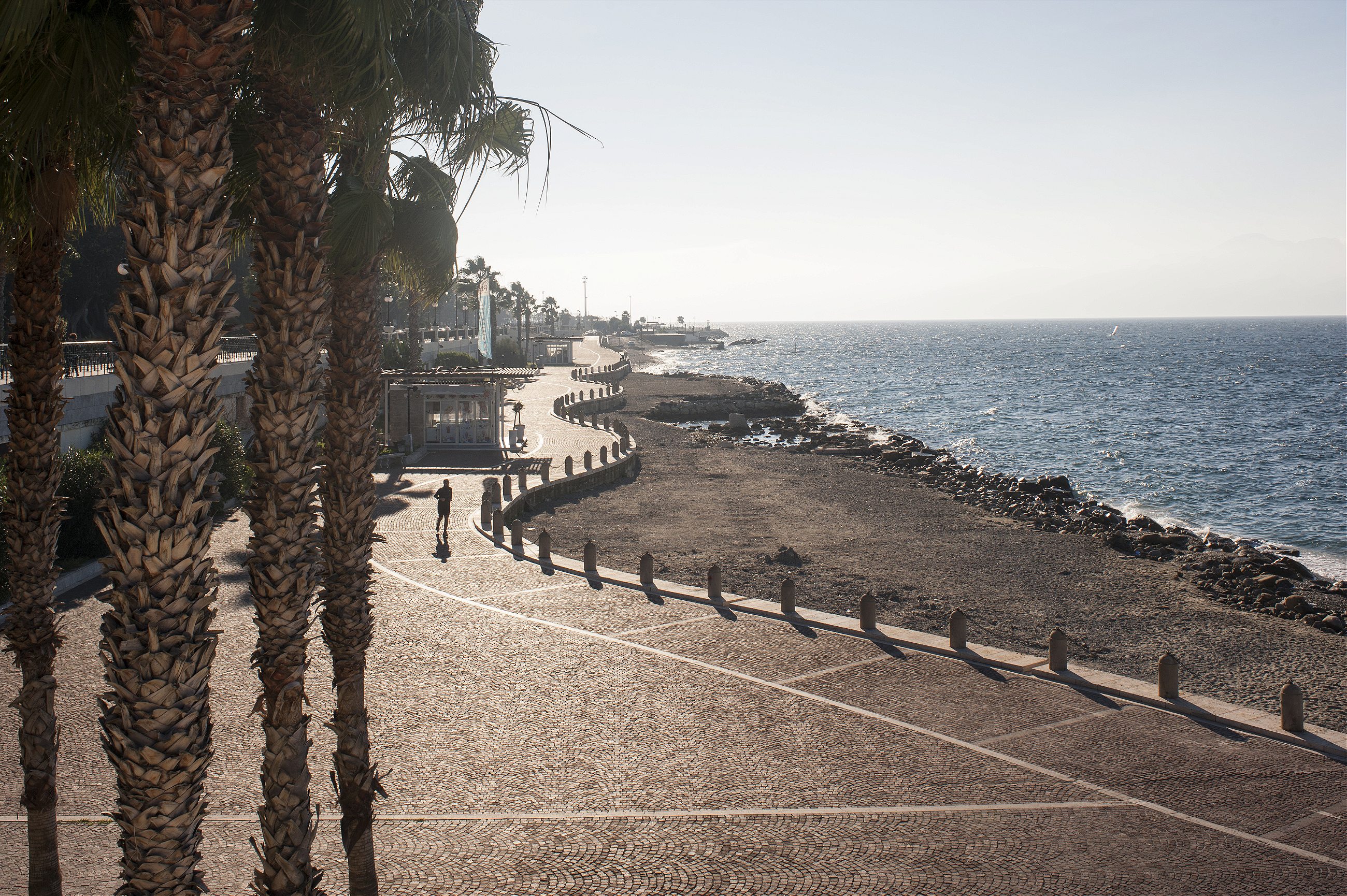
There is rivalry between ‘Ndrina, but alliances too, generally forged through arranged marriages between sons and daughters. The focus on family makes betrayal—breaking omerta, the code of silence—an especially costly proposition. Such is the ‘Ndrangheta’s impenetrability that it had existed for a century before the Italian state even realized it was there and it wasn’t until 2010 that the word “‘Ndrangheta” was codified in Italian law.
By that time, through its alliances with foreign drug cartels, especially South American ones, the ‘Ndrangheta was smuggling 70 percent of the cocaine and heroin in Europe through the small Calabrese port of Gioia Tauro. It had other businesses, too. In the early years of the millennium, the Calabrese town of Rosarno was a hub of the global arms broking business. The ‘Ndrangheta earned billions of euros more from fixing contracts for state and national works such as road-building and garbage collection. With so much cash, money laundering and asset management—through laxly regulated markets such as high-end London property or high finance—became a second, massive ‘Ndrangheta industry. Today the ‘Ndrangheta’s annual earnings are estimated at somewhere between $40 billion and $80 billion and its membership at several tens of thousands, though even anti-mafia prosecutors who have dedicated their professional lives to fighting the group admit that any figures are only a guess.
The ‘Ndrangheta’s infiltration into every part of Italy, and increasingly across the world, means it is often represented in street graffiti and newspaper cartoons by a Calabrese delicacy: polpo, the octopus. This was what most infuriated Cogliandro: the insidious manner with which its tentacles had wrapped themselves around every part of Calabrese culture. The ‘Ndrangheta had first coalesced as an organization after the foundation of Italy in 1861, which northern Italians (who oversaw it and dominated the new state) described as unification but southerners viewed as colonization. The ‘Ndrangheta became Calabria’s primary unit of defence, resisting the new state, killing its representatives and subverting its authority through corruption. That southern nationalism allowed the ‘Ndrangheta to claim a revolutionary righteousness. In time, the ‘Ndrangheta evolved a set of customs and traditions that wove together criminality, religion, family, and politics into a code of Calabrese honor and loyalty.
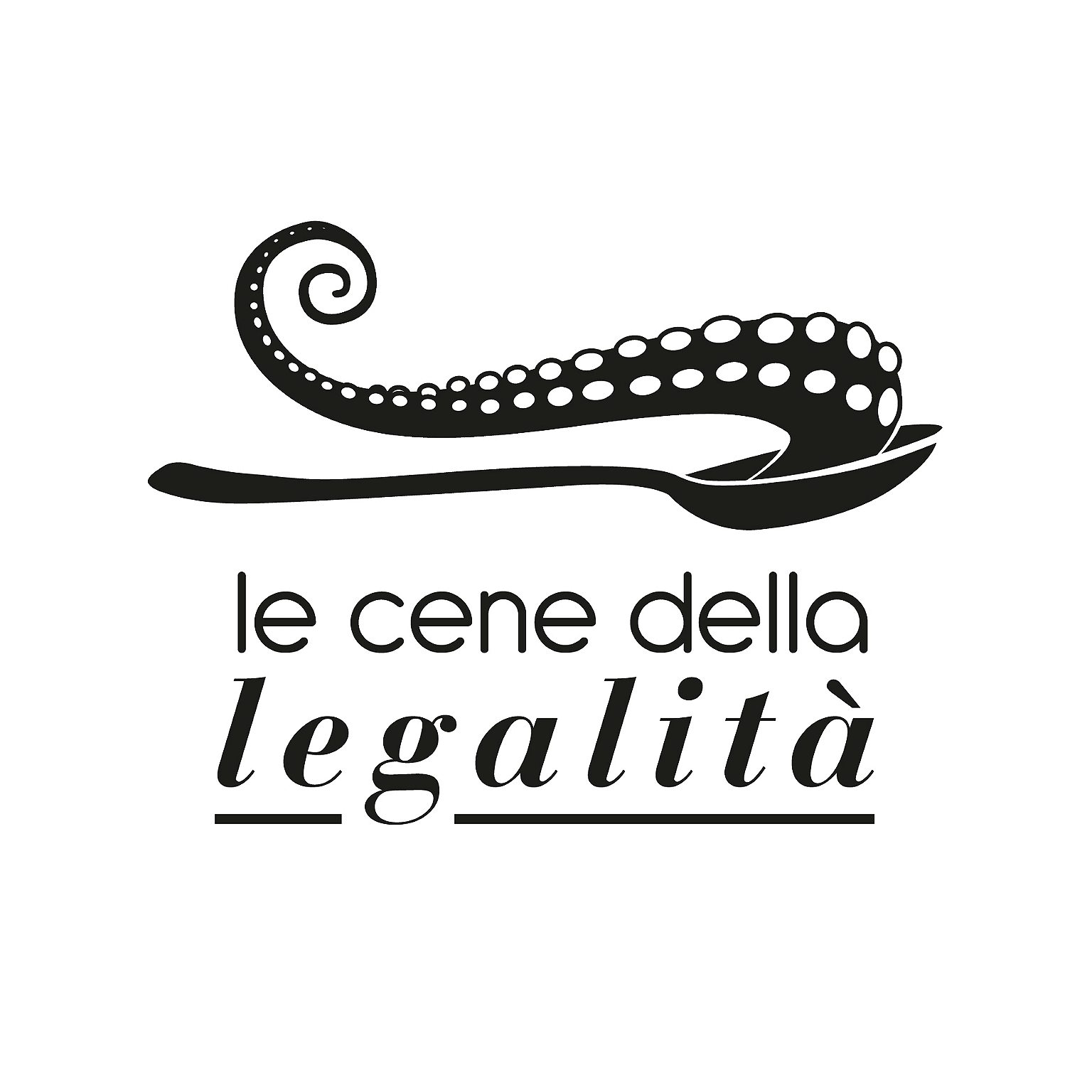
All these things were cloaks of convenience for the Ndrangheta’s true purpose: acquisition of power. Religion and family, for instance, were co-opted at the ritual to induct new members in which young men stood inside a horseshoe of ‘Ndranghetisti, pricked their fingers so they bled over a burning image of St. Michael and pledged to protect the ‘Ndrangheta even before their own family. To this day, on every September 2, the ‘Ndrangheta use the feast of the Madonna of Polsi in the remote village of San Luca in the Aspromonte mountains as cover for their AGM. Thousands of ‘Ndranghetists attend the celebrations, whose highlight is a meeting of the ‘Ndrina heads, over tables laden with plates of pasta with goat sauce, where they present a report of money earned and enemies killed in the past year and elect a new capo to head the organization for the year to come.
In the last few decades, as the ‘Ndrangheta expanded overseas with branches from Australia to Canada to Germany to the U.S., its financial need for pizzohas diminished. But the necessity of stamping its authority on its territory has never lessened. If ristorantes and neighborhood trattorias, cafés, gelatorias, and pizzerias were ingrained in southern Italian life, then the ‘Ndrangheta had to be as well. Everyone had to pay. The idea, ultimately, was to extend the ‘Ndrangheta’s familial loyalty, to make the ‘Ndrangheta so usual and so entrenched that for someone to reject it would be like disavowing family or even the essence of who they were as a Calabrese.
But across the Straits in Sicily in the early years of the new millennium, a new movement called Adiopizzo (Goodbye Pizzo) began to take shape. Shopkeepers, farmers, bar owners began to refuse to pay Cosa Nostra. Ordinary Sicilians also started to march through the streets of Palermo demanding an end to the Mafia. Cosa Nostra, weakened by its war with the state, was unable to respond. When it did, such as when it firebombed a trattoria in Palermo whose owners were helping to lead the campaign, the city’s residents found the restaurant new premises on a busy junction right in the center of town where they opened up again—and quickly became one of the city’s most celebrated and busiest destinations. In time, Palermo could even boast a city-center shop run by a group called Libera (Free), which sold olive oil, sauces, wine, and pasta exclusively from farmers who refused to pay pizzo.
From the other side of the Straits, Cogliandro observed the success of Adiopizzo and Libera. The influence of the Mafiosi was waning. Sicilians were winning back their culture and their integrity. There was no equivalent in Calabria, where the ‘Ndrangheta’s grip remained far tighter. That made the plan forming in Cogliandro’s mind dangerous. But, looking at Palermo, there was also a chance that there was the same unreleased appetite for change in Calabria, and maybe even a way for a young chef to make his name. “I thought to myself ‘If you denounce the ‘Ndrangheta, you win in life,” says Cogliandro. “But maybe you also win in business.”
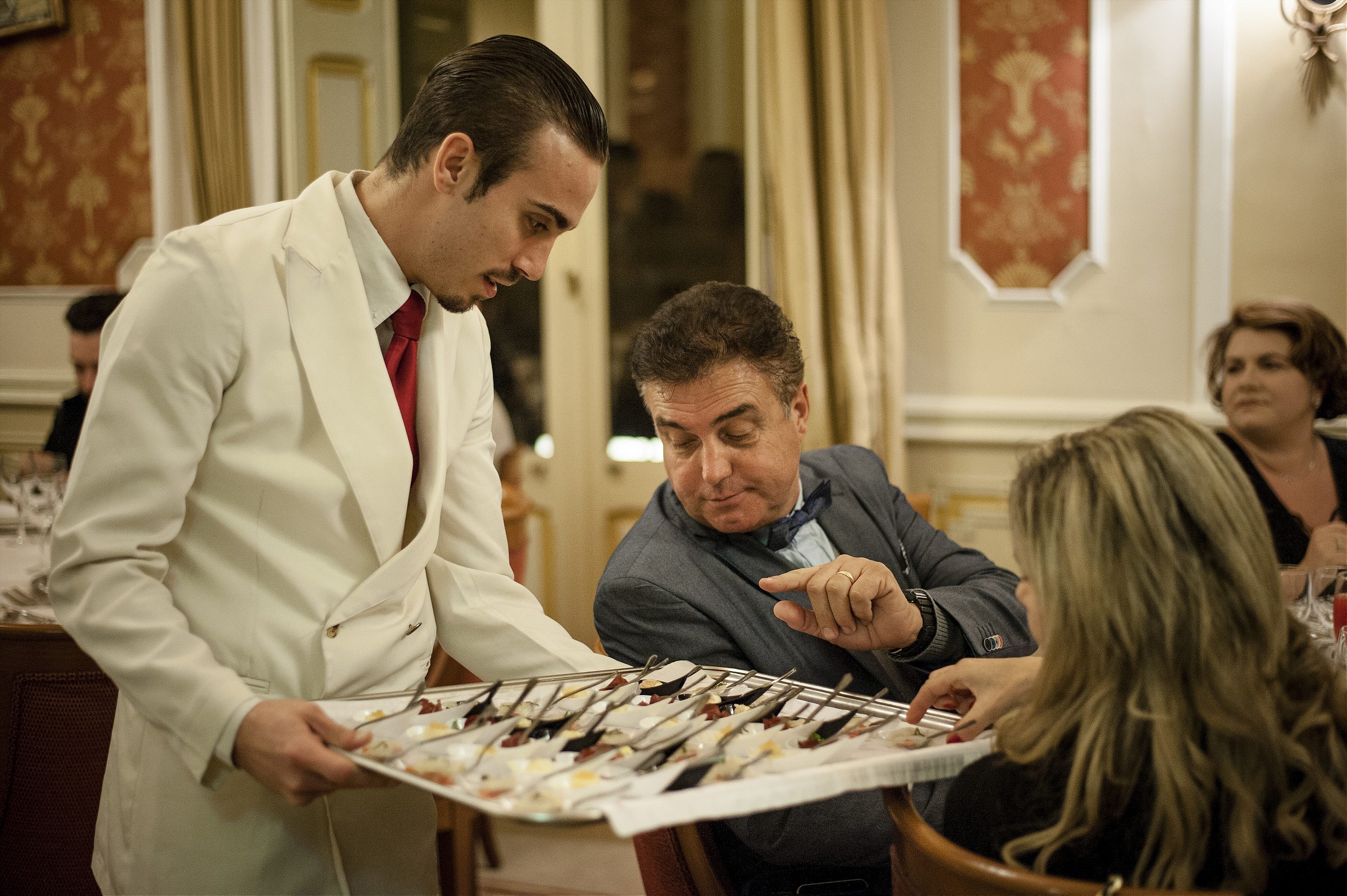
His father Demetrio’s example taught Cogliandro that opposing the ‘Ndrangheta was principled but could also cost you dearly. If Cogliandro was to beat the protection rackets, he was going to need protection against them. So Cogliandro did the unthinkable. A day after his first confrontation with the ‘Ndrangheta in December 2008, he drove to the office of an anti-mafia prosecutor in Reggio Calabria to report that the ‘Ndrangheta was trying to extort him.
In the closed world of Calabria, with the ‘Ndrangheta at the height of its power, that was something that almost never happened. Refusing to pay pizzowas one thing; crossing over to the hated northern-dominated Italian state was an act the ‘Ndrangheta would view as a treachery, and tantamount to a declaration of war. “It was an extremely delicate situation,” says Cogliandro. “I couldn’t make a single wrong step.”
Cogliandro’s first priority was to deal with the ‘Ndrangheta family that had tried to extort him. They needed to be arrested, prosecuted, and convicted. Cogliandro proposed to the prosecutors that he be the bait in a trap. The police should rig L’Accademia with cameras, he said. He would wait for the family to return and demand payment and, when they did, the police could record the conversation.
Delighted, the police agreed. They drove with Cogliandro back to L’Accademia and placed two tiny, hidden cameras on the back wall over the bar. The officers then coached Cogliandro with how to extract the evidence they needed. Schooled by a lifetime of secrecy, the ‘Ndrangheta liked to speak in metaphors, the officers said. When they first asked Cogliandro for money, they had asked him to leave it in an envelope marked “thinking of the cousins.” That might not be good enough for a conviction, said the police. Cogliandro had to make sure to steer the discussion explicitly to pizzo and specific amounts of money—and then hand it over in cash so the camera could see it.
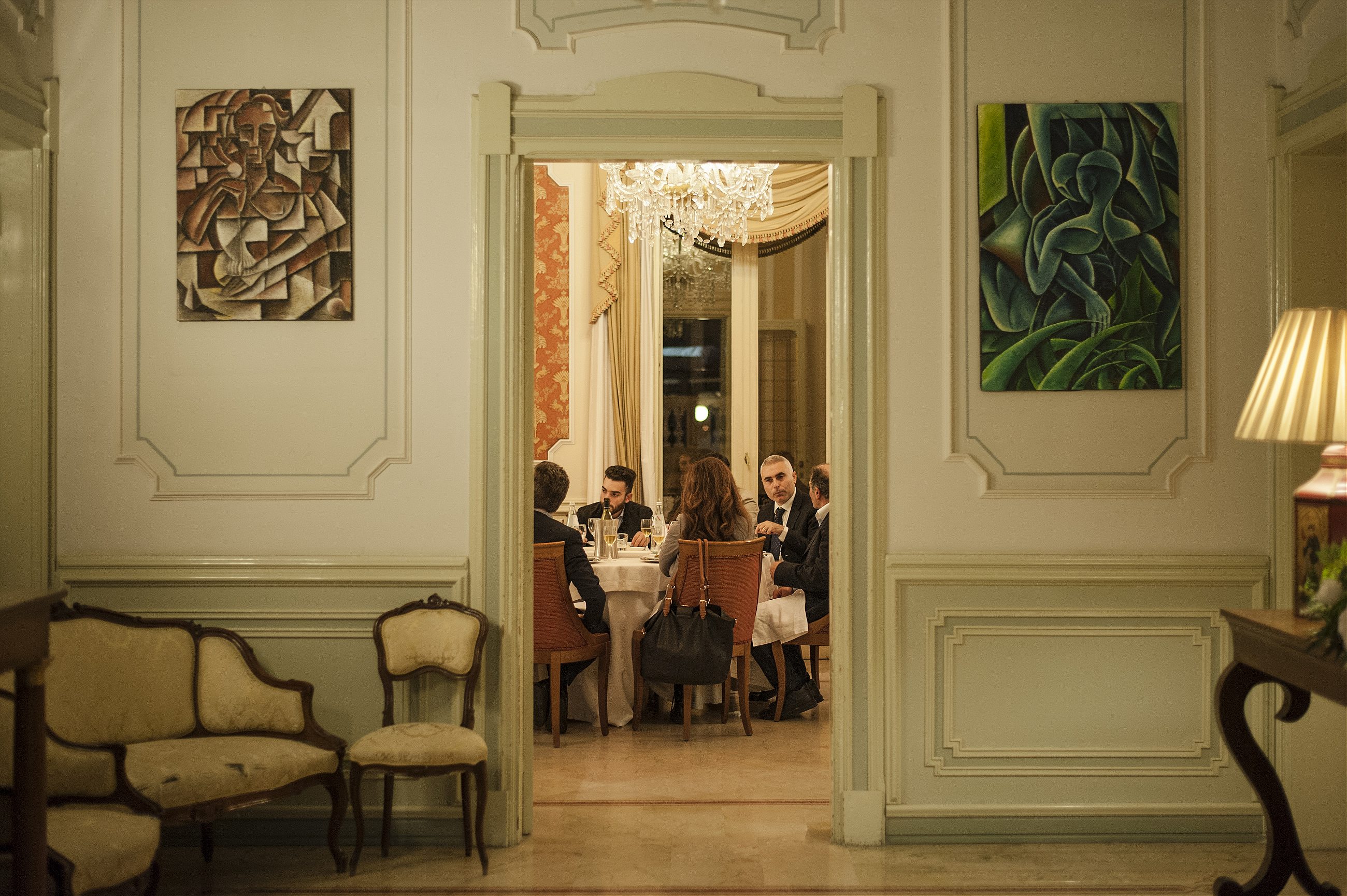
Eight days after their first visit, one of the ‘Ndrangheta four returned to L’Accademia. A second man waited in a car outside. After the cameras caught the man receiving cash from Cogliandro, the police arrested the pair. They were tried a few months later, and, with Cogliandro’s evidence, convicted.
But then came something Cogliandro hadn’t counted on: fame. The police released a tape of his sting to Italian journalists. Overnight, Cogliandro became a personality. Here was someone standing up to the Mafia. A chef! The heart and soul of Italy fighting back against the country’s great cancer! Television crews descended on L’Accademia to interview Cogliandro in his restaurant. He went on chat shows where the audience and fellow guests gave him standing ovations.
But at first, contrary to Cogliandro’s hopes, it wasn’t the kind of recognition L’Accademia needed. Crews filming Cogliandro were often puzzled why they were filming this superstar chef in an empty restaurant. The truth was the publicity and the story of the chef who defied the ‘Ndrangheta had a disastrous effect on L’Accademia. Customers stopped coming. Suppliers stopped calling. Banks refused credit, on the grounds that Cogliandro was now a credit risk. Cogliandro’s plan appeared to be going awry. He had stood by his beliefs. But he had ended up ruining his business anyway.
Cogliandro was also in some danger. Going into witness protection wasn’t an option. That would mean closing his restaurant and losing everything he’d fought for in the first place. He also began to receive threats: anonymous letters and attacks on Facebook. He had to expect worse to come. “Maybe you have problems,” he remembers telling himself. “Maybe they insult you. Maybe they scare you.”
Cogliandro found some solace in the support he received from his family. “My brothers said ‘We are beside you.’ My father-in-law as well.” And, after a few months of empty tables, Cogliandro found his new reputation was slowly beginning to attract a new type of customer. Students ran a campaign of support for him. The local authority gave him breaks on tax and water. Anti-mafia prosecutors and activists from Libera began holding regular events at L’Accademia. Cogliandro was also boosted by the anti-Mafia movement, which was expanding beyond Sicily across all of Italy. The prosecutors were making big busts; not just small fish but bosses, some of them in the heart of the state. Adiopizzo and Libera were also growing by the day. And in an unprecedented development in Calabria, a number of Mafia wives—often trapped in loveless, violent marriages arranged for them when they were barely into their teens— began testifying against their husbands, brothers, fathers, and sons.
And as his reputation grew, dish by dish, service by service, so did the restaurant. After a year or so, Cogliandro was able to move from his old premises on a beach in Lazzarro to new premises in the provincial capital, Reggio Calabria, on the first floor and roof terrace of a grand old townhouse a block back from the seafront with a spectacular view of Sicily and Mount Etna. His fame as a chef grew. When he took two teenage migrants from Senegal and Gambia as his new sous chefs, he cemented his reputation for something else: enlightenment.
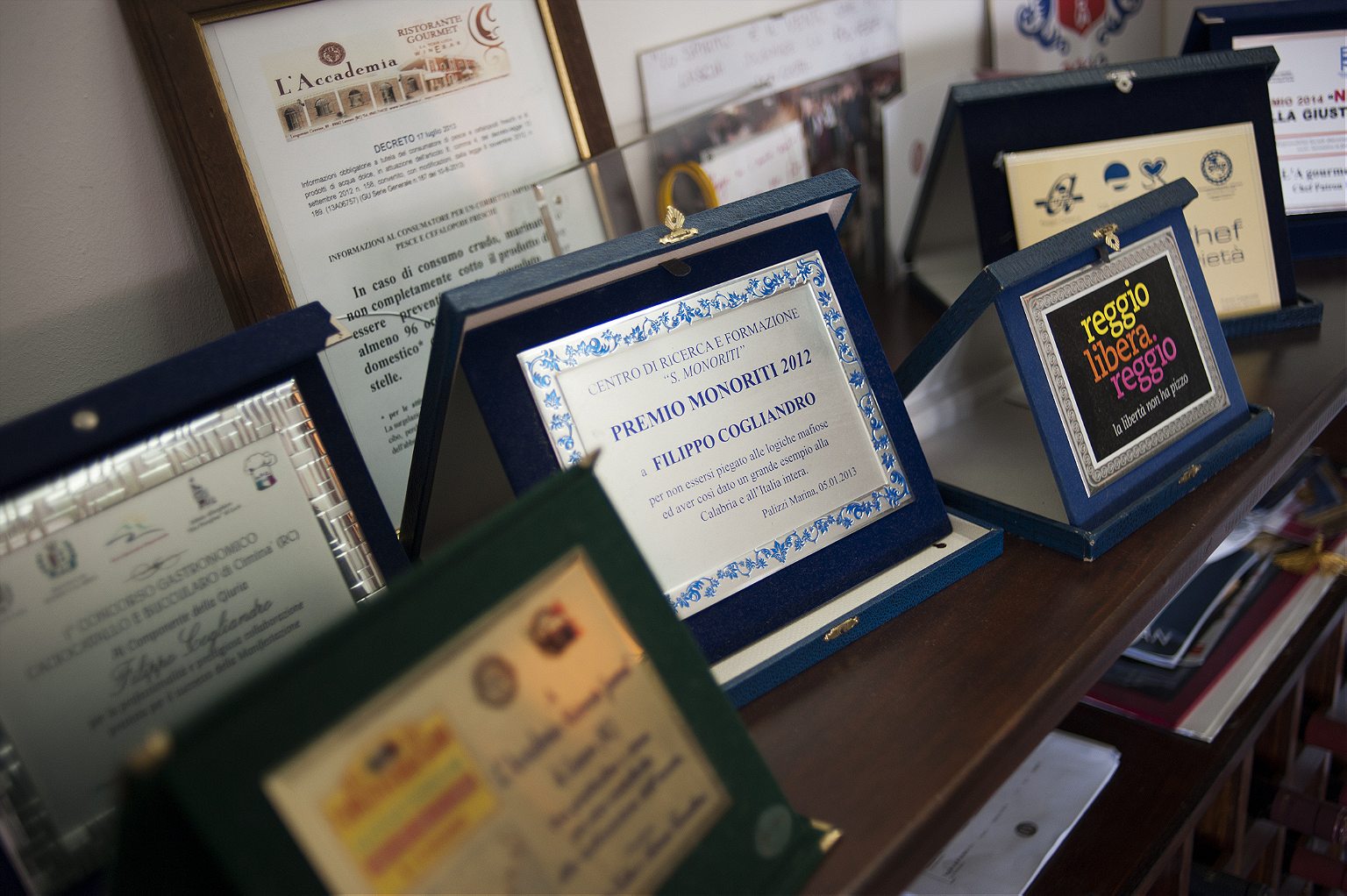
Cogliandro says it would be foolish to under-estimate the ‘Ndrangheta’s strength. “It’s a mountain,” he says. “The strongest in the world.” Still, there is no doubt their grip appears to be loosening. You can see it all over town, he says. “Reggio Calabria is just so quiet. And I think maybe something really is wrong for the ‘Ndrangheta. Around town, it’s as if they’re holding a sale. If before you paid €1,000, maybe now you pay €500, maybe €300. It’s something like a crisis. They’re adjusting their prices.”
Even as an anti-mafia campaigner, Cogliandro is still having fun. His waiting staff, I notice, are wearing a uniform that is a daringly direct reference to the ‘Ndrangheta: black shirts and white ties, like the zoot suit gangsters of 1920s Chicago. As we make to leave, the chef says he has one last thing to show me and beckons me over to a computer at reception.
On the screen, he pulls up a logo for a new anti-mafia campaign. The ‘Ndrangheta has expanded around the world. So Cogliandro has decided to follow it. He will be cooking at a series of public culinary-demonstrations-come-anti-Mafia-rallies across Europe, the U.S., and beyond. The idea is to denounce the ‘Ndrangheta while showcasing the true spirit of Calabria in his food. Cogliandro is especially pleased with the logo, a purple octopus tentacle curled up on a silver spoon. The ‘Ndrangheta is a centuries-old, all-powerful crime syndicate, and defeating it may never be possible. But in the private battlefield of his kitchen, with his knives and a grill as his weapons, Chef Cogliandro has found a way to destroy it night after night. “You see what we do?” he laughs. “We eat it.”
Roberto Boccaccino is a photographer based in Palermo, Sicily.
